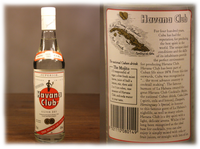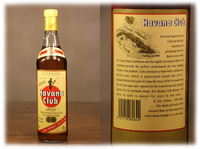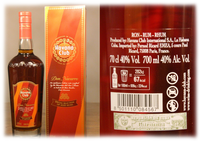History of Rum
On his second trip, in 1493, Christoph Columbus brought sugar cane from India to the Caribbean. Due to the climate and the vegetation it found the best conditions to grow. In addition to the sugar production, it was now also possible to use the “waste”.
Later, through the slave trade, the cheap field workers came. They lived in very poor and dirty huts.
Since a lot of experimentation was carried out on the further development of sugar, it was found over the course of time that the molasses or sugar syrup began to ferment quickly after a few processing steps when it was mixed with water and fiber.
The slaves consumed this liquid in order to drink the suffering from their soul, so to speak, to put themselves in a state of intoxication or simply to make the hard everyday life seem a little more bearable. When their landlords found out, the embarked natives were given this drink deliberately to strengthen themselves.
In the newly explored countries, the sugar cane growers decomposed the waste from the sugar cane, as was already known. But after the fermentation process was complete, they were burned in the copper pot still. The slaves drank this drink, which is considered the original form of rum, because for the spanish colonial rulers the taste was to sharp, rough and strong. Just one other Group became happy to have it: Pirates! On the rough sea, the original form of rum was a perfect drink, which became not bad and inedible, like beer.
Actually, pirates took water and beer with them on their sometimes months-long journeys. But both were perishable. When pirates first came into contact with the pioneer of rum (mid-16th century), they saw many advantages. Rum has an intoxicating, non-perishable effect and a good change from the dreary and hard everyday life at sea. Rum quickly became an integral part of every ship journey. Rum was cheap and instead of Whisky very easy to get.
Because the rum at that time was very hard, the pirates tried to make it more enjoyable with Caribbean fruits. Until then, lime was an unknown fruit in Europe ....
In the 19th century rum became very famous in Europe. Specially mixes with some exotic fruits. Mostly the lower class of people liked it. Whisky was for rich people, rum for the others...
Because of the location the US became to the biggest customer of caribbean rum. From 1919 to 1933, alcohol prohibition was arrived to the United States. This meant that the consumption, transportation and manufacture of alcohol were prohibited. The rum trade suffered, but although a new law had come into effect, very few adhered to it. The production facilities continued to operate illegally and speakeasy clubs were driven out. Thousands of Americans traveled to the islands of the Caribbean, mainly Cuba, to legally consume alcohol. This gave the Caribbean sugar cane dynasty a new upswing. The Americans loved the taste of this drink and so the rum slowly but surely developed from the drink of the slaves to the drink of the connoisseur's. The idea for this was to produce a greater variety of products. There should be several varieties due to different storage times and better technologiy.
With this new level of development, the distillers put more work into the rum. So the makers were careful to give this drink a higher quality. A distinction is made between various rum qualities such as single cask rum, blended rum, solera rum and cask strength rum as well as rhum agricole. It is estimated that there are now well over 1,500 different species.
Around 1850, Felice Presto in Jamaica and Don Bacardi in Cuba were the forefathers of the first industrial rum production for the masses. The Presto distillery was destroyed and burned down by the indigenous people of Jamaica in 1890. The company was widespread and highly regarded, but could not recover from it and reported its financial ruin. With the name Bacardi it is of course clear that it is a forefather of today's family empire.
In 1888 Ron Brugal started a milestone for rum lovers when they made rum with natural flavors of chocolate, coffee and cinnamon. This was the start for all other distilleries to make experiments with flavoors next to fruits.
Parts of the salaries at sea were paid in rum. Even during World War II, the British Navy tried to keep their soldiers happy with cheap rum. That lasted until 1973.
In the early years of the discovery of the early rum to the current modern rum, not much has changed with the basic substance. It still consists of the sugar cane juice, water and finely chopped sugar cane. In industrial production, sugar cane is often replaced by molasses. If these ingredients are mixed together in barrels, the mash is created, which is fermented using yeast. Through the fermentation step, a fermentation process develops in the liquid, which can have an alcohol content of five percent at the end of the process. Distilling is now typical for the rum, which ensures that the rum has a percentage of over 60 percent. The basic drink is made. A distinction is made between pot still rum from discontinuous distillation in the copper still and column still rum from continuous distillation in the column system.
Rum in detail (click here)


















